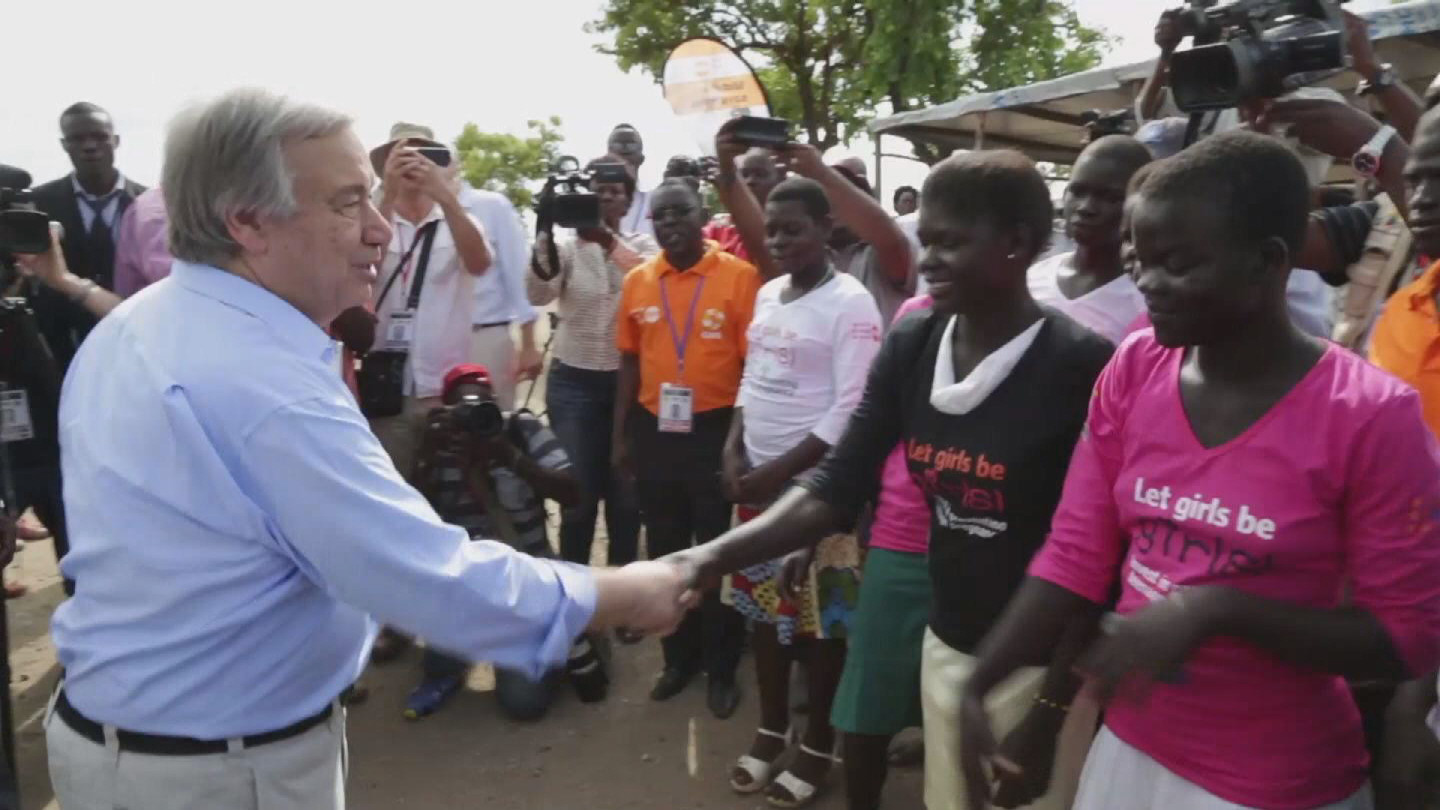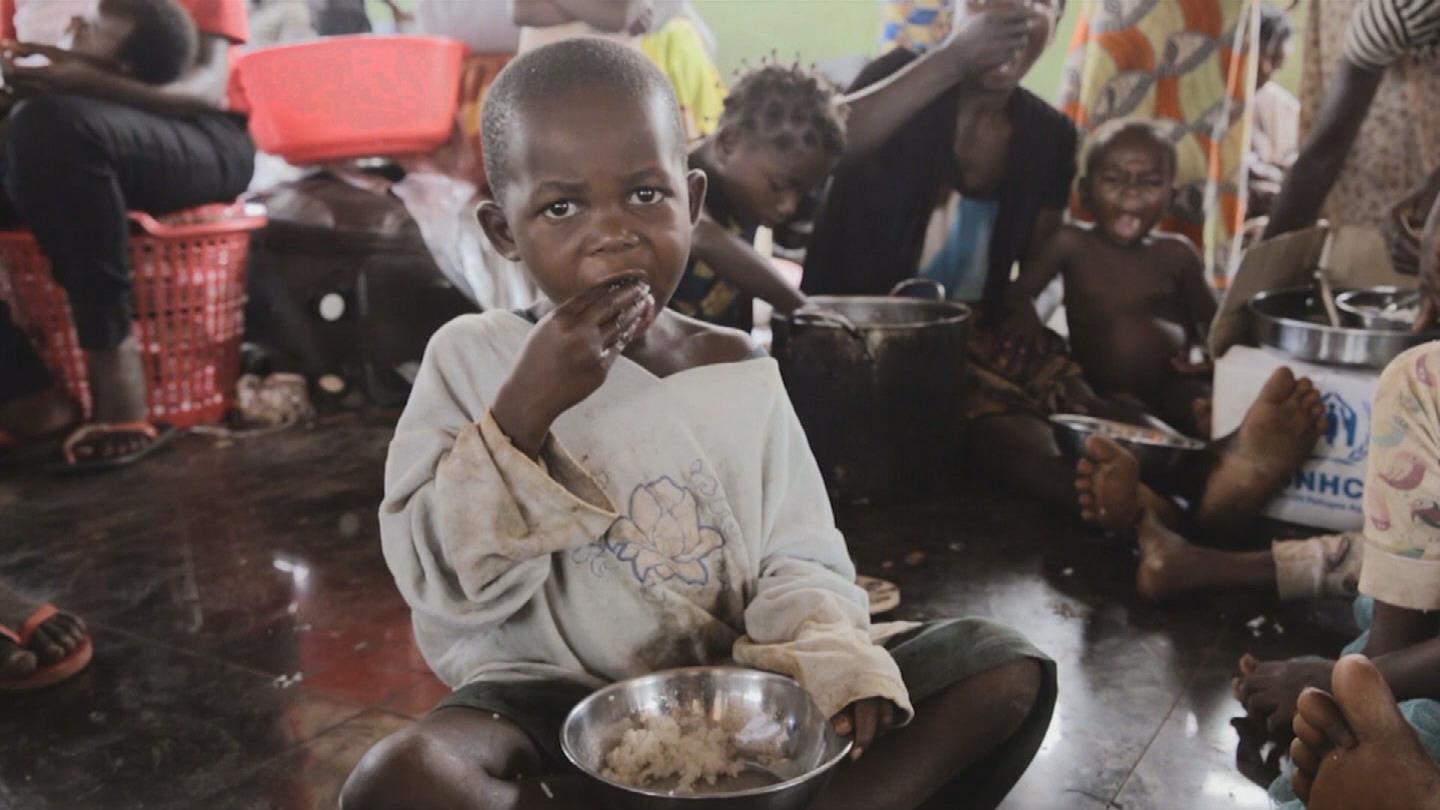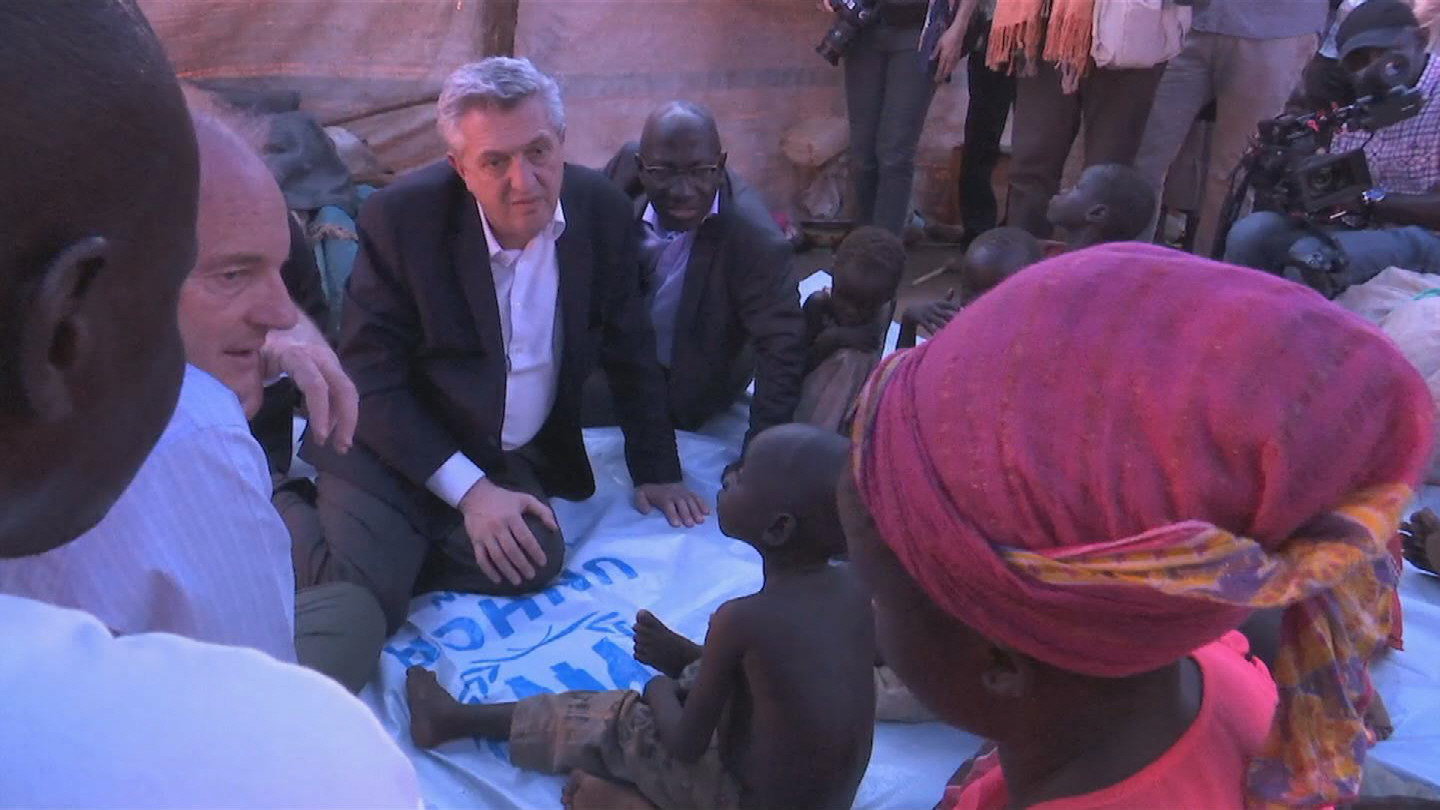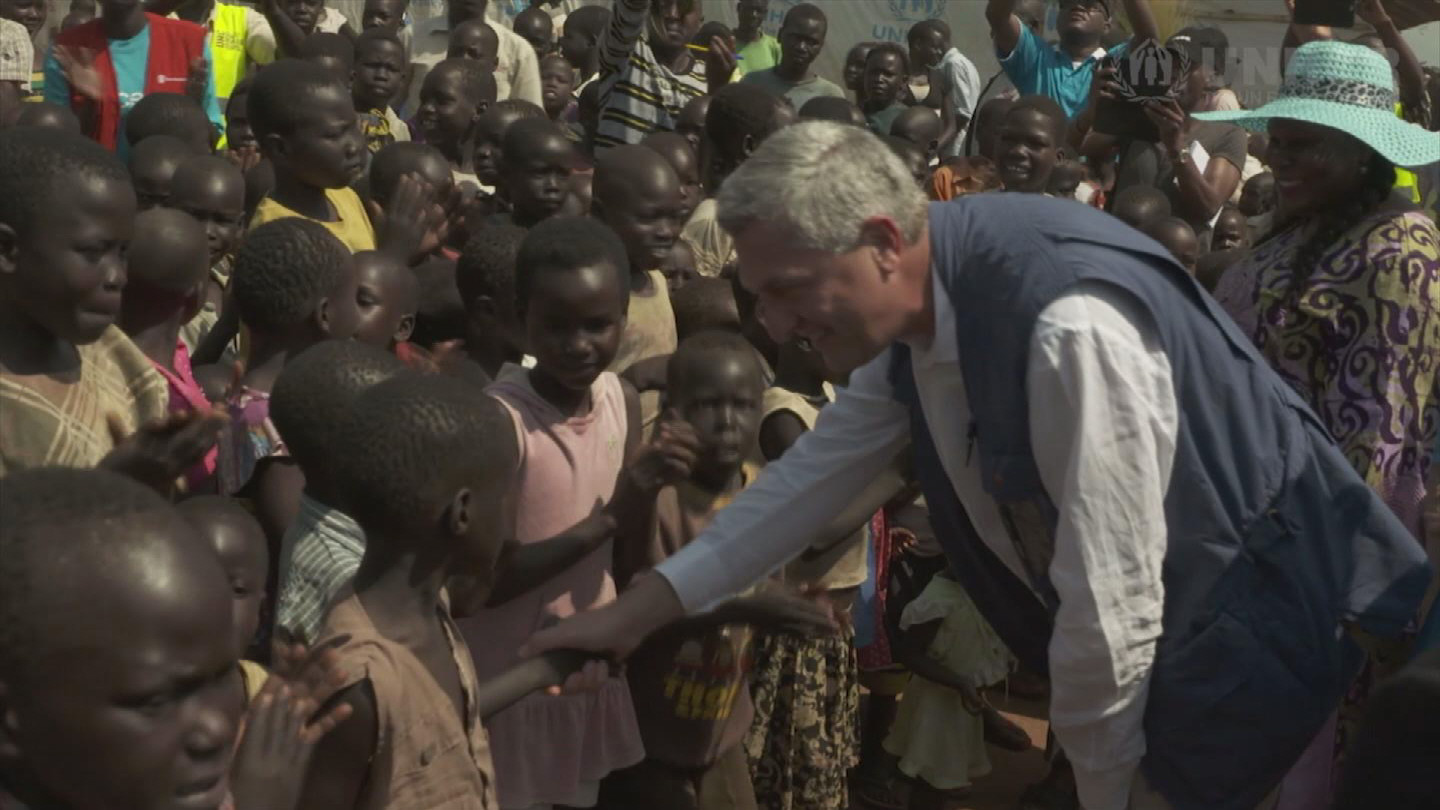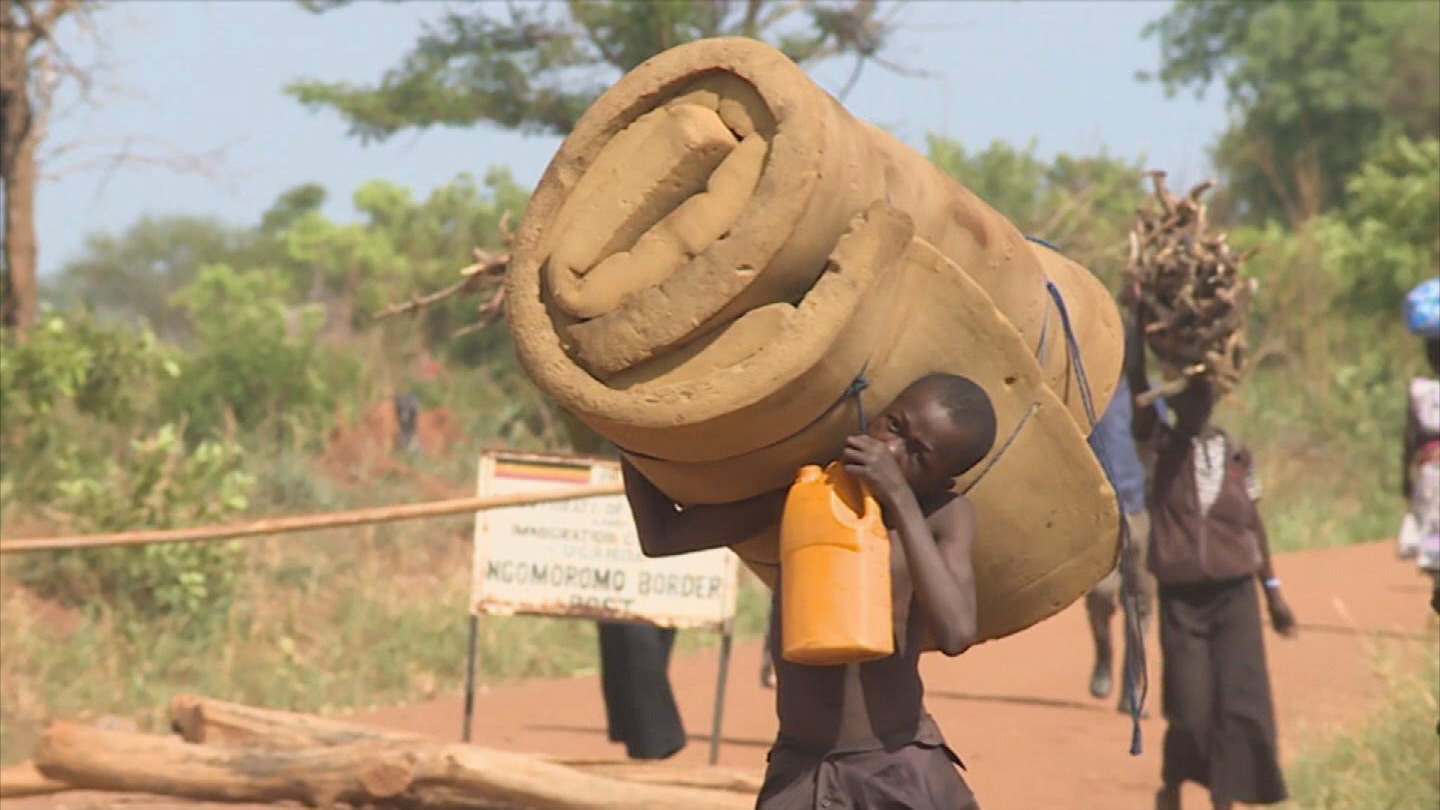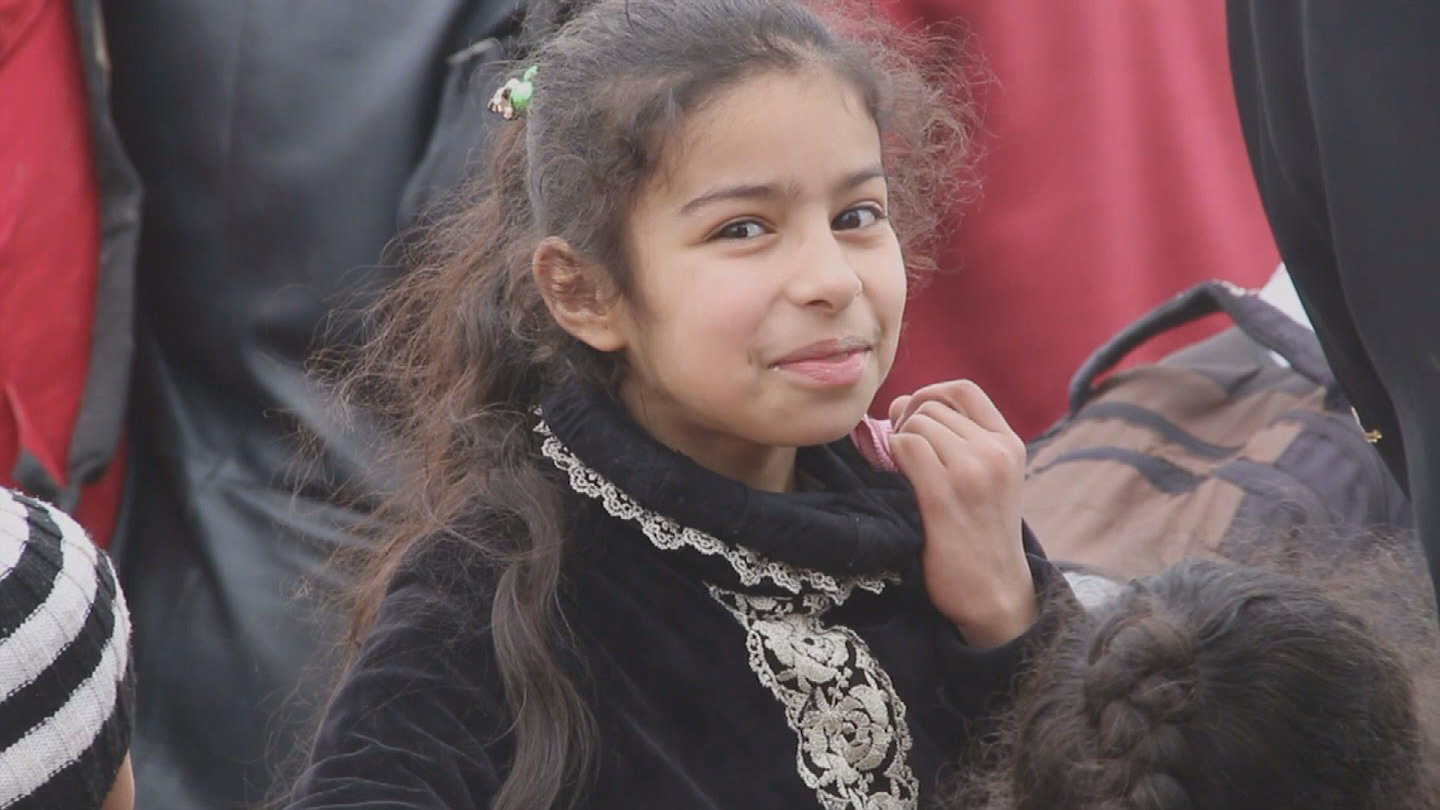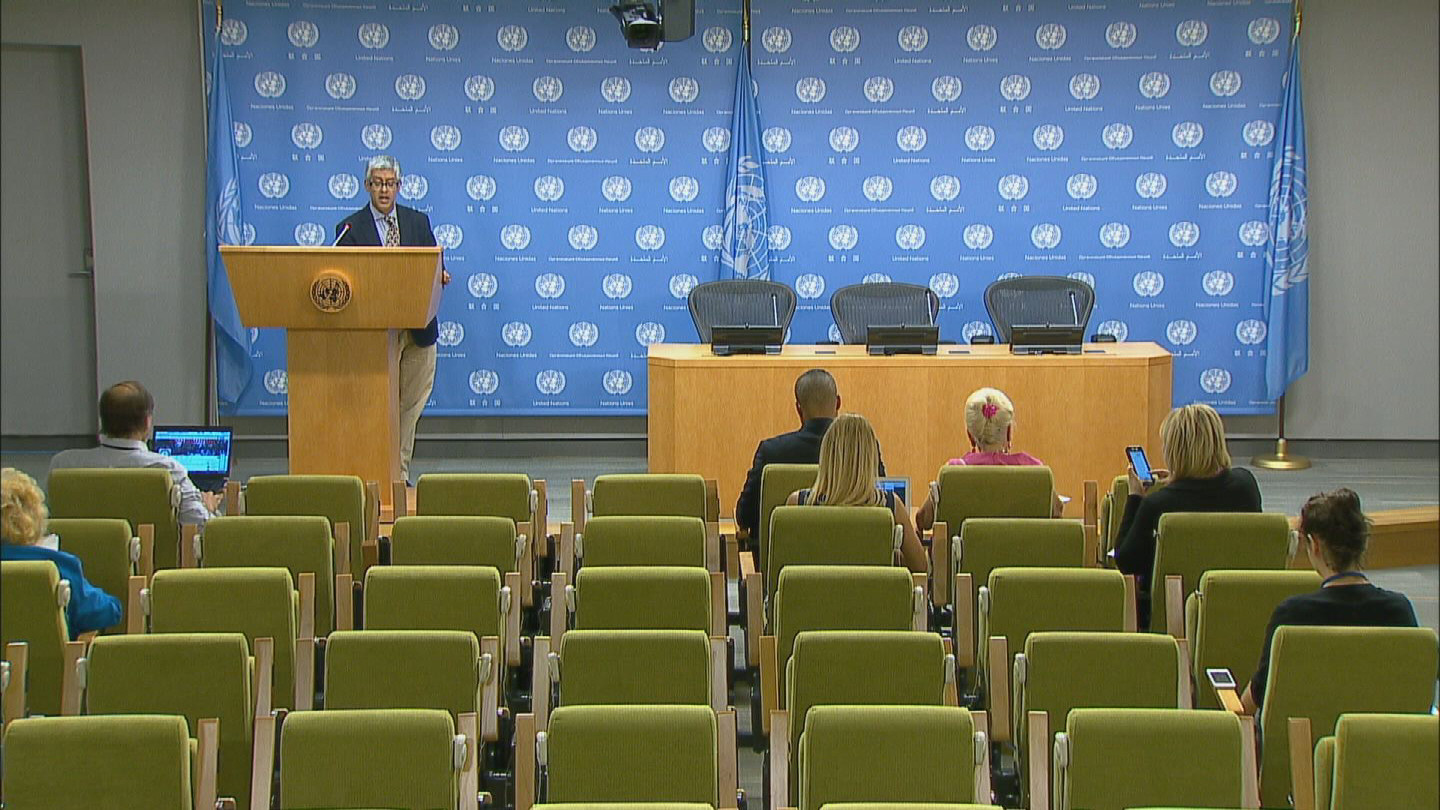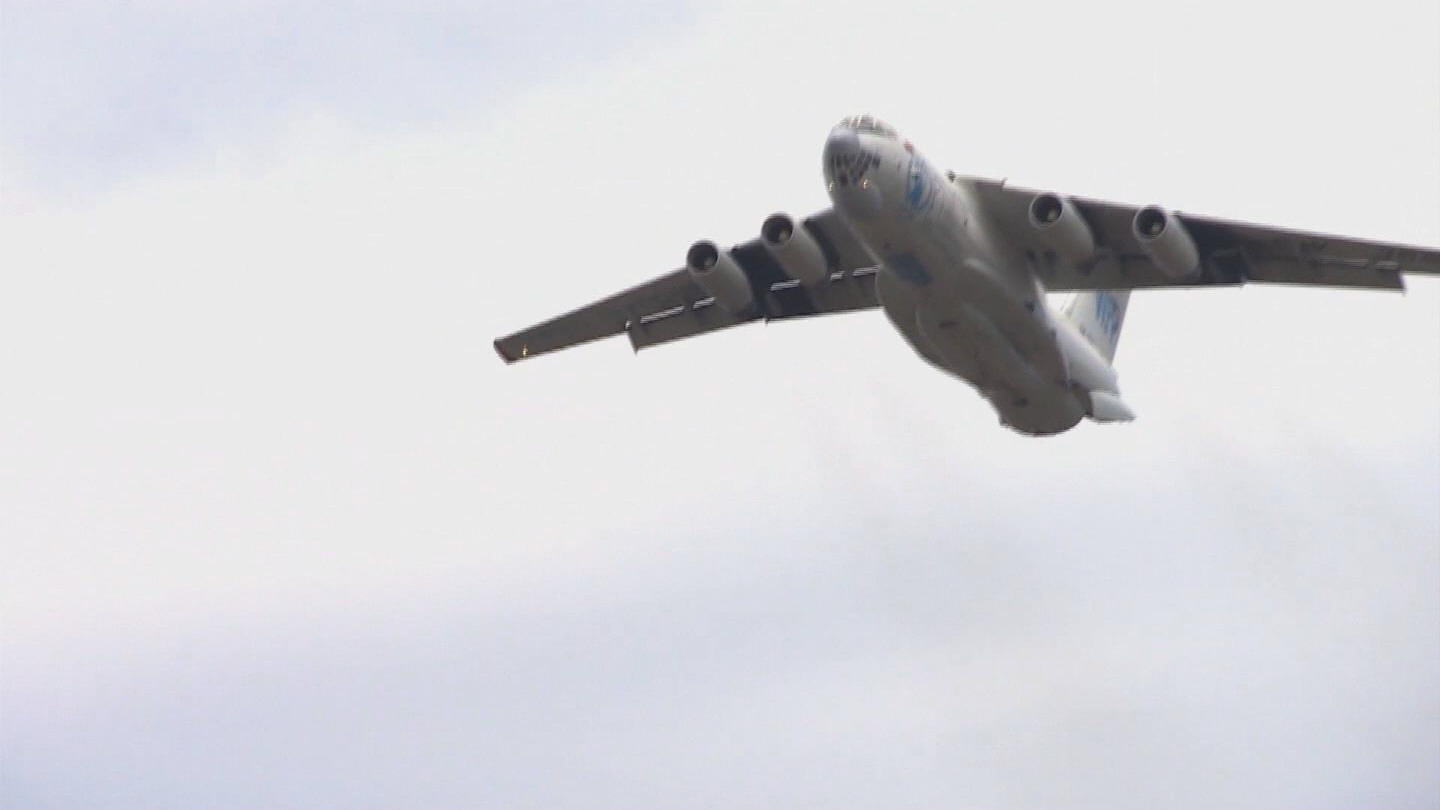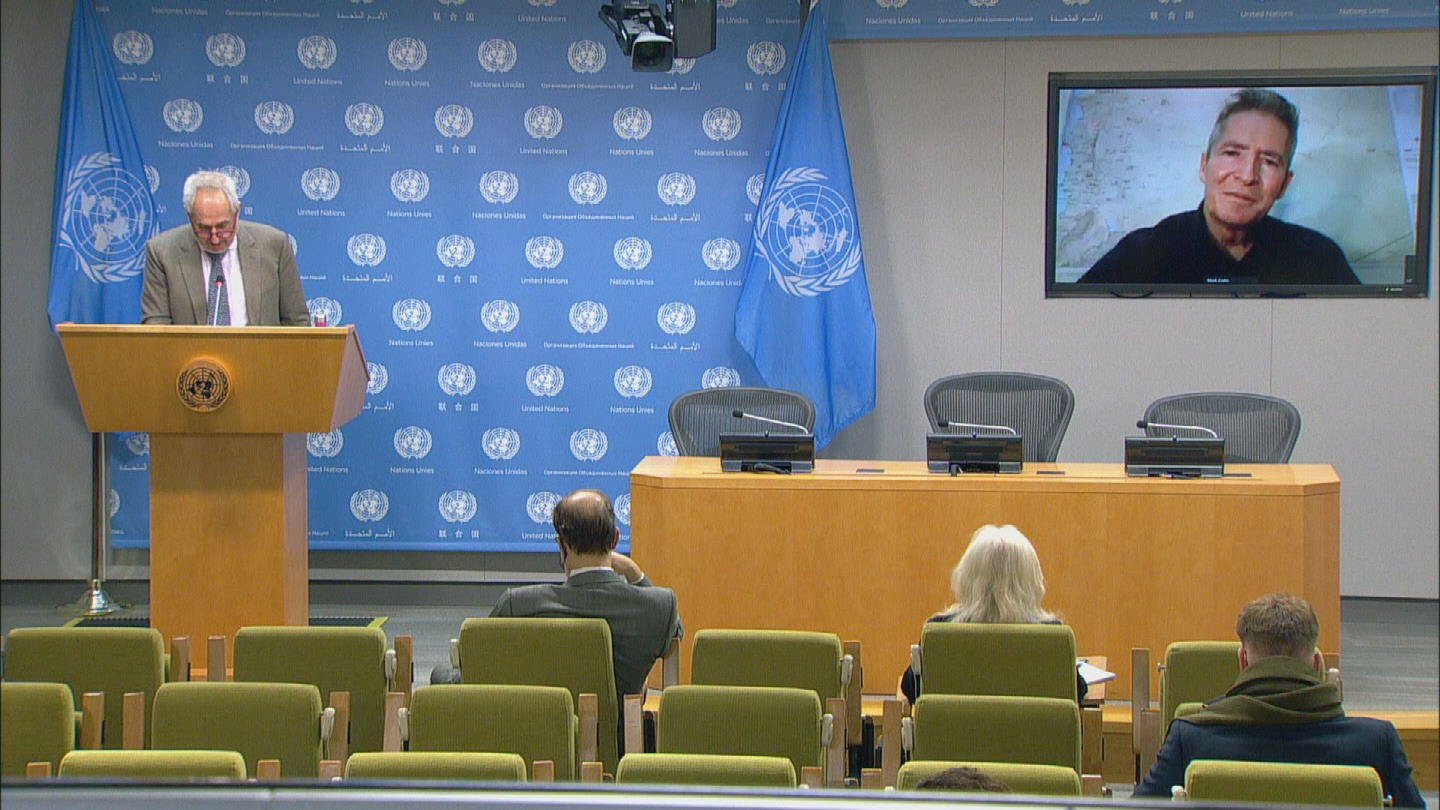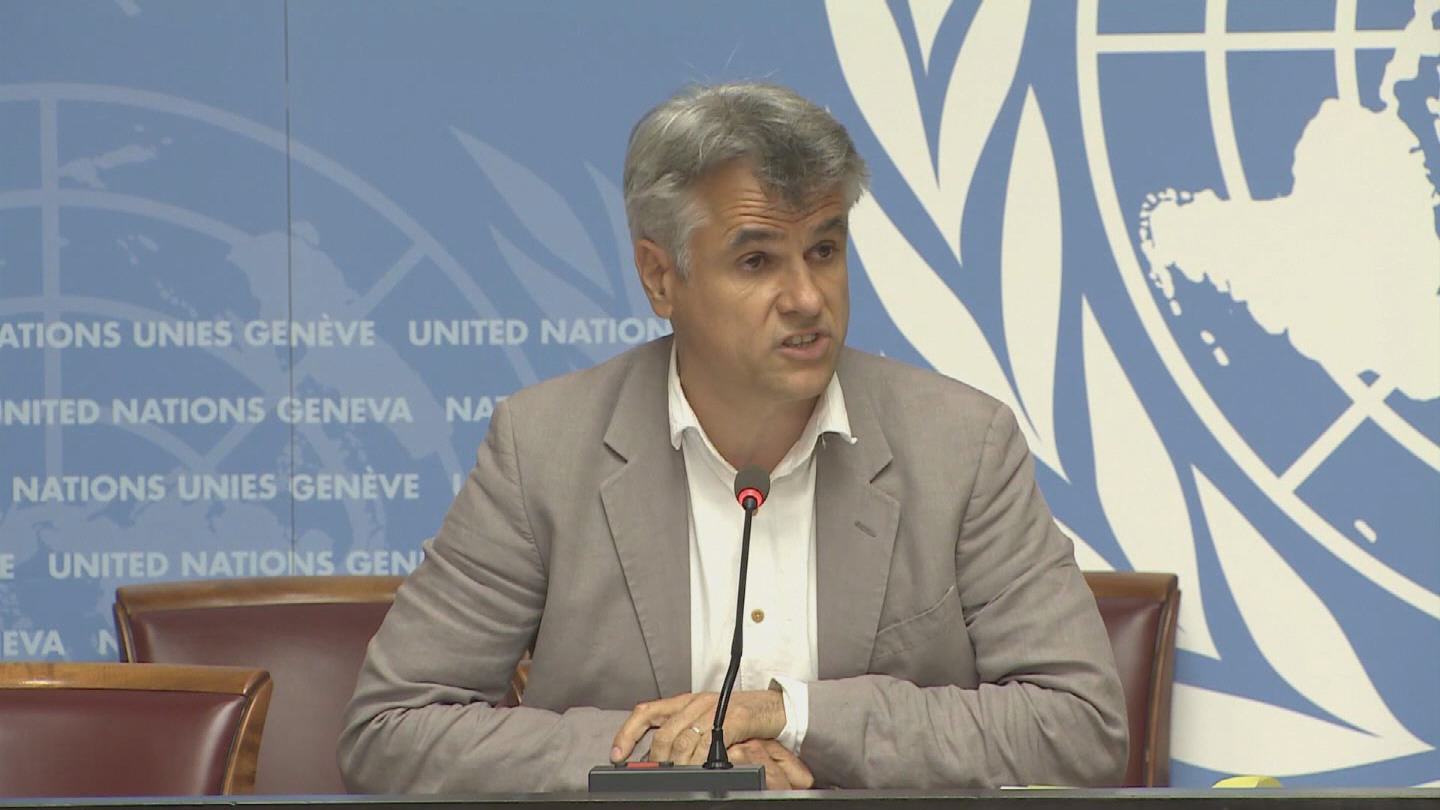UGANDA / SOUTH SUDAN REFUGEES
Download
There is no media available to download.
Share
STORY: UGANDA / SOUTH SUDAN REFUGEES
TRT: 02:36
SOURCE: WFP
RESTRICTIONS: NONE
LANGUAGE: KUTUK NA KAKWA / ENGLISH / NATS
DATELINE: 20 MAY 2017, SOUTH SUDAN / 20, 21 MAY 2017, UGANDA
20 MAY 2017, NEAR KAYA, SOUTH SUDAN
1. Various shots, people in South Sudan fleeing on foot to the border with Uganda
20 MAY 2017, NEAR LOKAJO, UGANDA
2. Various shots, people crossing this bridge that connects South Sudan and Uganda
3. Various shots, Betty Takalb and 15 members arriving in Uganda
4. SOUNDBITE (Kutuk na Kakwa) Betty Takalb, South Sudanese Refugee:
“There’s nothing to eat. Everyone is panicking. At night you can’t sleep because of the fighting. It’s very difficult.”
20 MAY 2017, BIDIBIDI CAMP, NEAR YUMBE, UGANDA
5. Various shots, rainbow over camp
6. Various shots, South Sudanese refugee growing maize in camp
21 MAY 2017, NEAR IMVEPI, UGANDA
7. Various shots, WFP food distribution.
8. SOUNDBITE (English) Lydia Wamala, WFP Spokesperson:
“At the moment about 2000 people are arriving in Uganda per day arriving and the World Food programme needs to provide them with life-saving food and nutrition support. We are currently spending 16 million dollars a month to support the refugees and we have a shortfall of 60 million dollars in the coming 6 months. We need the support of the donors and governments out there to help us feed these people as they continue to arrive.”
9. Various shots, newly arrived refugees staying by the side of a road near refugee settlement waiting to be registered
10. SOUNDBITE (English) Refugee from Yei, South Sudan:
“There is political instability so we cannot stay there. Because food is life, water is life and money is life also. So, if there is political instability we cannot stay there so, better for us to find a safer place to stay.”
11. Various shots, WFP hot meals of white corn and beans being served to newly arrived refugees
The scale of the refugee crisis in Uganda is extraordinary, with average daily arrivals of over 2,000 people. The country now hosts the largest refugee population in Africa, over 1.2 million people, 74 percent from South Sudan.
People crossing this bridge that connects South Sudan and Uganda become refugees when they reach the Ugandan side. Since July 2016, more than 600,000 people have fled the escalating conflict and now famine in South Sudan into Uganda.
People continue to arrive, mostly on foot with only what they can carry to start a new life as a refugee. Typically this amounts to a few animals, bedding and cooking utensils. Around 100 refugees per day arrive at this spot.
Betty Takalb has just arrived with 15 members of her family after walking 3 days from a small village near Yei, South Sudan.
SOUNDBITE (Kutuk na Kakwa) Betty Takalb, South Sudanese Refugee:
“There’s nothing to eat. Everyone is panicking. At night you can’t sleep because of the fighting. It’s very difficult.”
A rainbow shines on BidiBidi, the world largest refugee settlement in the world. In less than a year, this settlement, now hosting more than 275,000 people, has sprung up in what was a sparsely populated area. BidiBidi has surpassed the population of what was previously the world’s largest camp, Dadaab, for Somali refugees in Kenya.
Uganda has an open door policy towards refugees giving them land, work permits, freedom of movement and the means to start small farms. WFP provides food and cash to help them survive until they can become self-sufficient.
SOUNDBITE (English) Lydia Wamala, WFP Spokesperson:
“At the moment about 2,000 people are arriving in Uganda per day arriving and the World Food programme needs to provide them with life-saving food and nutrition support. We are currently spending 16 million dollars a month to support the refugees and we have a shortfall of 60 million dollars in the coming 6 months. We need the support of the donors and governments out there to help us feed these people as they continue to arrive.”
Refugees arrive in northern Uganda exhausted and hungry. WFP provides most of them with food and cash but, due to a shortfall of US$60 million in May, WFP is being forced to cut in half the amount of cereal. The rest of the ration (oil, beans, special nutritious cereal mix for children, oil) will be distributed in full.
Refugees receive food from WFP, shelter from UNHCR and water from UNICEF. A man eats fire ants- are a traditional snack that brings comfort.
SOUNDBITE (English) Refugee from Yei, South Sudan:
“There is political instability so we cannot stay there. Because food is life, water is life and money is life also. So, if there is political instability we cannot stay there so, better for us to find a safer place to stay.”
The number of refugees WFP assists has more than doubled in the last year, and our operation is under considerable strain to meet their full food needs. WFP has a shortfall of US$60 million to fund operations from May through October.
